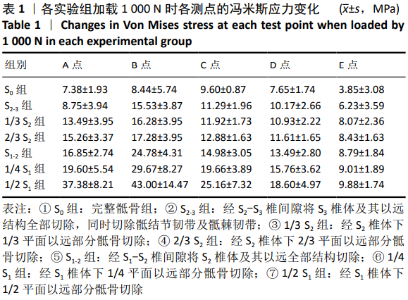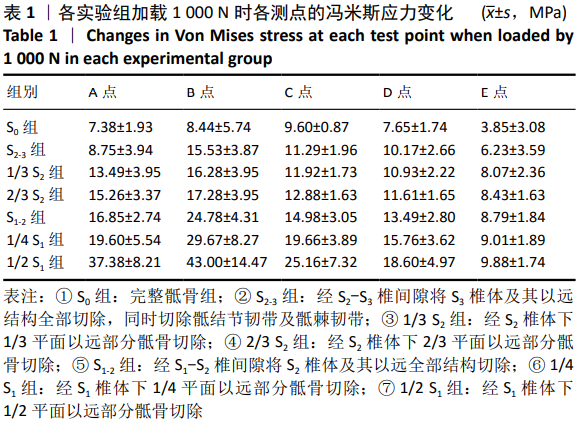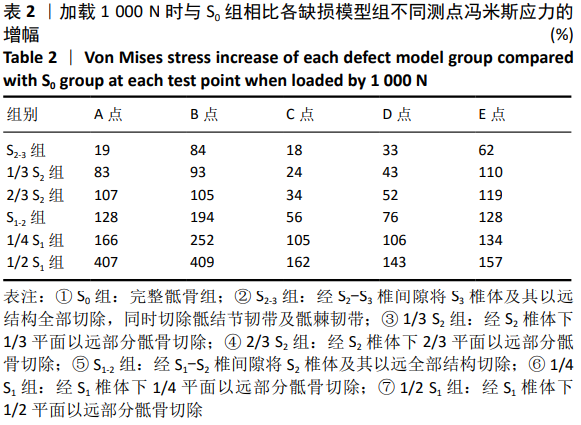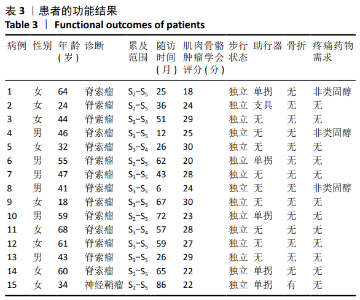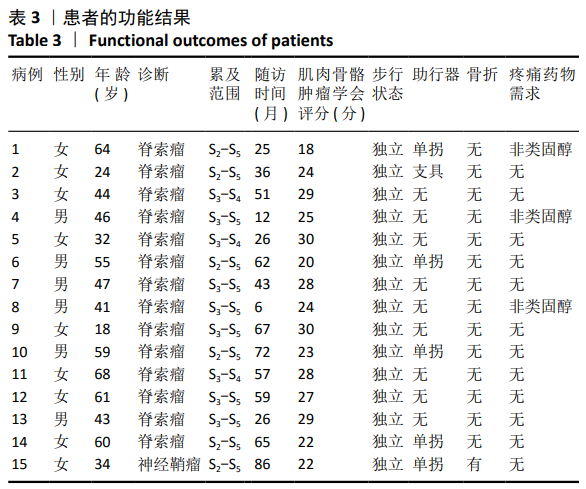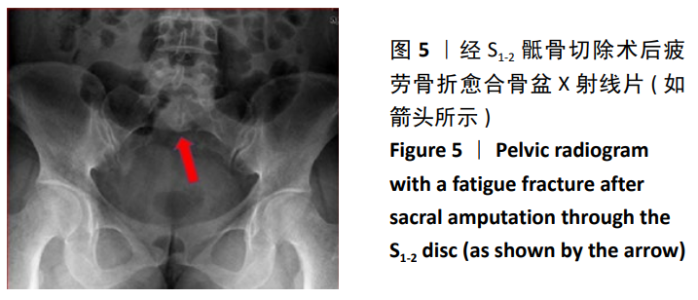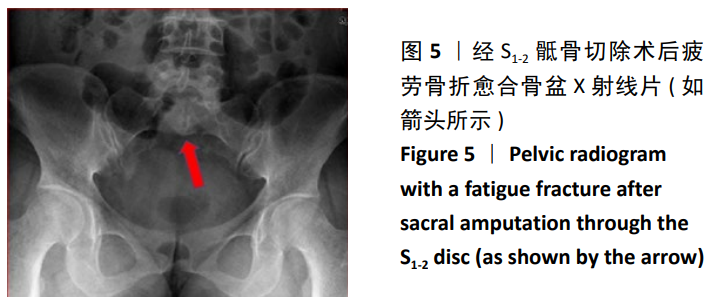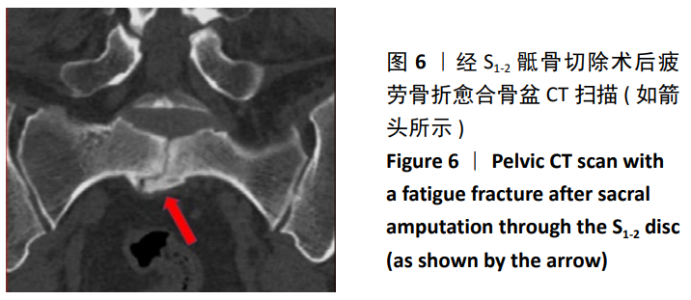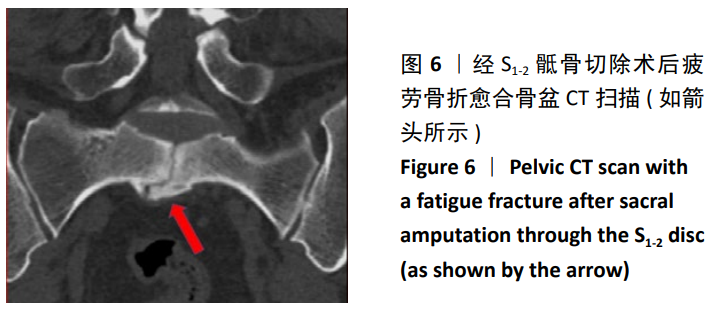[1] ARKADER A, YANG CH, TOLO VT. High long-term local control with sacrectomy for primary high-grade bone sarcoma in Children. Clin Orthop Relat Res. 2012;470:1491-1497.
[2] CLARKE MJ, DASENBROCK H, BYDON A, et al. Posterior-only approach for en bloc sacrectomy: clinical outcomes in 36 consecutive patients. Neurosurgery. 2012;71:357-364;discussion 364.
[3] 董森,汤小东,姬涛,等. 骶骨肿瘤患者行全骶骨切除后腰骶部稳定性的重建[J]. 中华骨与关节外科杂志,2018,11(7):481-485.
[4] 姬涛,郭卫,杨荣利,等. 高位骶骨肿瘤切除内固定术后内置物断裂原因分析[J]. 中国脊柱脊髓杂志,2015,25(1):39-44.
[5] KIATISEVI P, PIYASKULKAEW C, KUNAKORNSAWAT S, et al. What are the functional outcomes after total sacrectomy without spinopelvic reconstruction? Clin Orthop Relat Res. 2017;475(3):643-655.
[6] RUGGIERI P, ANGELINI A, USSIA G, et al. Surgical margins and local control in resection of sacral chordomas. C1in Orthop Relat Res. 2010; 468: 2939-2947.
[7] 郑诚功. 骨科生物力学的进展[J]. 中华创伤骨科杂志,2005,7(10): 901-902.
[8] HUGATE RR JR, DICKEY ID, PHIMOLSARNTI R, et al. Mechanical effects of partial sacrectomy:when is reconstruction necessary? C1in Orthop Relat Res. 2006;(450):82-88.
[9] SATO K, KIKUCHI S, YONEZAWA T. In vivo intradiscal pressure measurement in healthy individuals and in patients with ongoing back problems. Spine. 1999;24(23):2468-2474.
[10] ENNEKING WF, DUNHAM W, GEBHARDT MC, et al. A system for the functional evaluation of reconstructive procedures after surgical treatment of tumors of the musculoskeletal system. Clin Orthop Relat Res. 1993;286:241-246.
[11] GUNTERBERG B, ROMANUS B, STENER B. Pelvic strength after major amputation of the sacrum:an experimental study. Acta 0rthop Scand. 1976;47(6): 635-642.
[12] 罗翼,姜勇,张学磊,等.骶骨高选择性分段切除对骨盆稳定性影响的生物力学研究[J]. 华西医学, 2013, 28(10):1536-1540.
[13] 庄新明,于滨生,李泽民, 等. 骶骨切除范围对髂骨钉重建腰-髂固定结构稳定性的生物力学影响[J]. 中国修复重建外科杂志,2010, 24(4): 430-434.
[14] 郭卫, 李大森, 尉然, 等. 单中心原发骶骨肿瘤790例的流行病学分析[J]. 中国脊柱脊髓杂志,2014,24(11):971-978.
[15] JI T, GUO W, YANG R, et al. What are the conditional survival and functional outcomes after surgical treatment of 115 patients with sacral chordoma? Clin Orthop Relat Res. 2017; 475(3): 620-630.
[16] YANG Y, NIU X, LI Y, et al. Recurrence and survival factors analysis of 171 cases of sacral chordoma in a single institute. Euro Spine J. 2017; 26(7): 1910-1916.
[17] CHEN KW, YANG HL, LU J, et al. Prognostic factors of sacral chordoma after surgical therapy: a study of 36 patients. Spinal Cord. 2010; 48(2): 166-171.
[18] 周磊, 孟通, 杨兴海, 等. 骶骨脊索瘤的临床特点及预后因素分析[J]. 脊柱外科杂志,2015,13(5):280-284.
[19] YANG H, ZHU L, EBRAHEIM NA, et al. Analysis of risk factors for recurrence after the resection of sacral chordoma combined with embolization. Spine J. 2009;9(12):972-980.
[20] SUNG HW, SHU WP, WANG HM, et al. Surgical treatment of primary tumors of the sacrum. Clin Orthop Relat Res. 1987; 215: 91-98.
[21] WEI R, GUO W, JI T, et al. One- step reconstruction with a 3D- printed, custom-made prosthesis after total en bloc sacrectomy: a technical note. Eur Spine J. 2017;26(7):1902-1909.
[22] 刘桂华, 陈锦标, 蔡宏华, 等. 脊柱通用钉棒系统重建骶骨肿瘤切除后腰骶关节功能及稳定性[J]. 遵义医学院学报,2016,39(1): 66-69.
[23] 李大森, 郭卫, 曲华毅, 等. 骶骨肿瘤术后伤口感染的相关因素分析[J]. 中国骨与关节外科,2013,6(3): 239-242.
[24] 张鹏, 蔡启卿, 高嵩涛, 等. 骶骨肿瘤切除术后切口感染影响因素的logistic回归分析[J].郑州大学学报(医学版), 2015,50(2): 274-277.
[25] GUO Y, YADAV R. Improving function after total sacrectomy by using a lumbar-sacral corset. Am J Phys Med Rehabil. 2002;81:72-76.
[26] ARKADER A, YANG CH, TOLO VT. High long-term local control with sacrectomy for primary high-grade bone sarcoma in children. Clin Orthop Relat Res. 2012;470:1491-1497.
|
